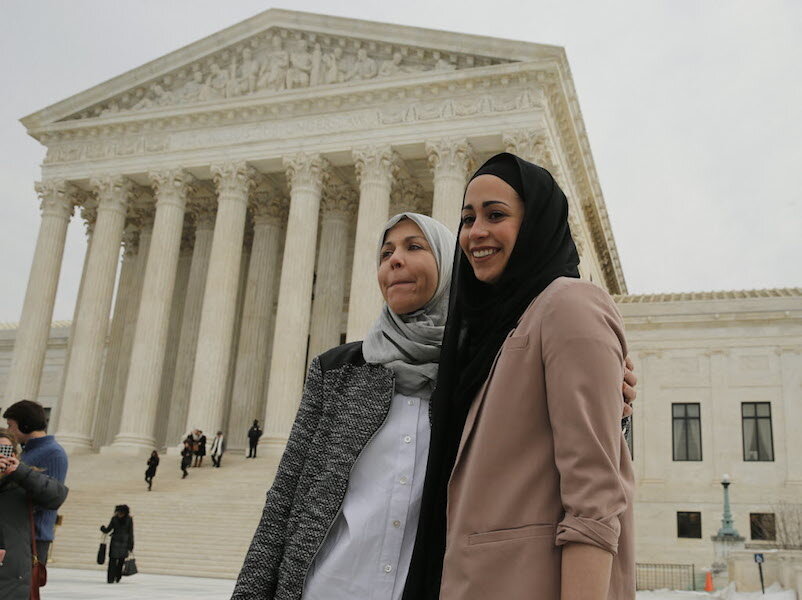A court ruling for headscarf liberty
In a ruling Monday, the US Supreme Court decided that employers cannot discriminate in their hiring against Muslim women simply because they wear a headscarf. The ruling adds to the constitutional protection of religious practices that are sometimes viewed as out of sync with trends in society or government policy.
The case involved a job applicant, Samantha Elauf, who was rejected by clothing retailer Abercrombie & Fitch because her head covering violated a company dress code about an employee’s “look.” The high court held in an 8-to-1 vote that the company should have accommodated Ms. Elauf’s religious practice of wearing a hijab even if she did not ask for an exception. All that is necessary is to show the discriminatory motive of an employer.
The justices rested their reasoning on part of the 1964 Civil Rights Act known as Title VII that bans discrimination in employment based on a person’s religious practice unless a practice poses undue hardship.
“Title VII does not demand mere neutrality with regard to religious practices – that they be treated no worse than other practices. Rather, it gives them favored treatment, affirmatively obligating employers not ‘to fail or refuse to hire or discharge any individual ... because of such individual’s’ ‘religious observance and practice,’ ” wrote Justice Antonin Scalia for the majority in the ruling.
Whether by law or court ruling, accommodations for people of faith rely on a core principle of the Constitution, namely the free exercise of religion. In this decision, the court emphasized that Congress meant to protect more than religious belief. “[R]eligious practice is one of the protected characteristics that ... must be accommodated,” wrote Mr. Scalia.
To emphasize the point, he speculated about an employer who “thinks (though he does not know for certain) that a job applicant may be an orthodox Jew who will observe the Sabbath, and thus be unable to work on Saturdays.” In such a hypothetical case, the employer would be discriminating in violation of the law.
After this case arose in 2008, Abercrombie changed its policy on headscarves – a sign of how secular institutions must learn to accommodate the core beliefs and practices of religious individuals. The high court has recently ruled on similar cases, such as a Muslim man’s right to grow a beard in prison. In a coming decision, the justices are expected to rule on a Roman Catholic institution’s request not to be forced to sign a form under the Affordable Care Act that would trigger insurance coverage for contraceptives of its employees.
Each case must be decided on its discrete facts and arguments. Both courts and lawmakers must be careful yet considerate in offering either general or targeted protections. Religion has not always been served well by government favoritism. But at the least, as this latest ruling shows, government must insist on neutrality toward religion in the workplace as a general right to liberty.






